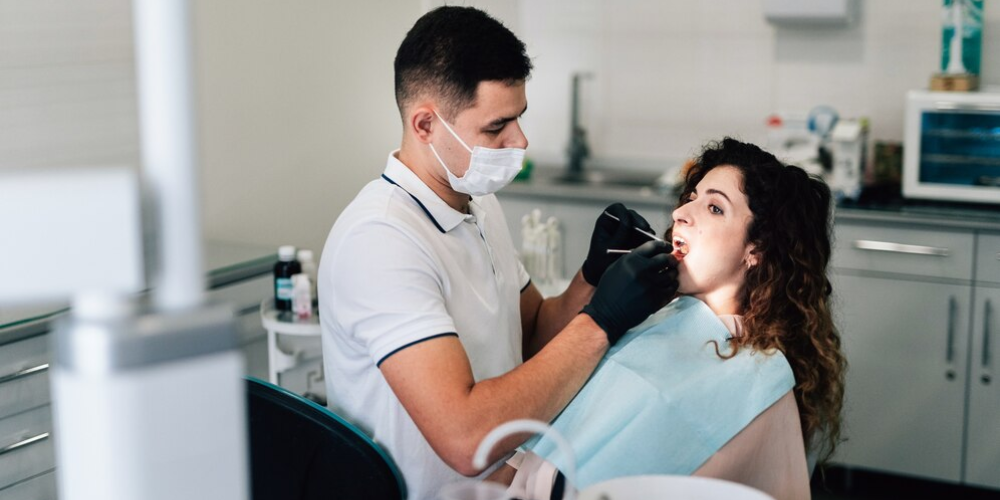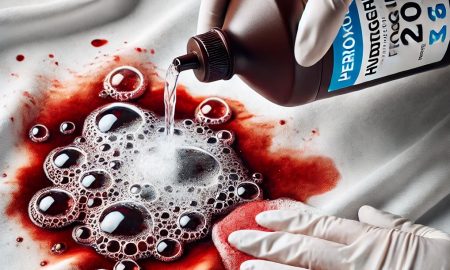
How to Fix a Broken Tooth? Essential Procedures and Care

Breaking or chipping a tooth can be alarming, but it’s often manageable with prompt dental care. If a tooth is chipped, cracked, or broken, the most important thing is to address the situation quickly and effectively. Understanding how to fix a broken tooth and knowing the steps to take can help mitigate pain and restore dental health.
This guide will cover essential actions to take and the treatments available to ensure a smooth recovery.
When a tooth is chipped, broken, or cracked, the first thing to remember is not to panic. While this type of injury is often not severe, prompt action can help minimize discomfort and preserve the tooth.

Freepik | Avoid chewing on the affected side and stay away from hot or cold foods that may cause pain.
What to Do Right Away
- Preserve the Broken Piece – If a chunk of your tooth has broken off, place it in a container of milk or saliva. This helps keep the tooth fragment viable until you can get to the dentist.
- Avoid Painful Foods – Until you can see a dentist, avoid chewing on the affected side and steer clear of very hot or cold foods that might cause discomfort.
- Contact a Dentist – If you have a regular dentist, call their office immediately. If they’re closed, their voicemail should provide instructions for emergencies.
If you’re without a dentist or unable to secure an emergency appointment, dial 111 for advice. In urgent situations, finding a local dentist willing to see you on short notice is essential. Note that there may be a charge for urgent consultations.
Professional Dental Care
Seeing a dentist is the best way to determine the appropriate treatment for a broken tooth. Depending on the severity of the damage, several procedures might be recommended.
Common Treatments for a Broken Tooth
- Bonding – For minor chips or cracks, the dentist might apply a tooth-colored resin to restore the tooth’s appearance and function.
- Fillings – If a significant portion of the tooth is missing, a dental filling might be used to fill in the gap and restore normal function.
- Crowns – For more severe damage, a crown—a cap that fits over the tooth—might be necessary to protect and strengthen the remaining tooth structure.
- Root Canal Treatment – If the damage is extensive and the tooth’s nerves are exposed, a root canal may be required to treat the infection and preserve the tooth.
Long-Term Care and Prevention

Freepik | Regular brushing and flossing keep your teeth and gums healthy.
After your broken tooth is treated, maintaining good oral hygiene is crucial to prevent further issues. Here are some tips for long-term care:
- Brush and Floss Regularly – Proper brushing and flossing help keep your teeth and gums healthy, reducing the risk of additional damage.
- Avoid Hard Foods – Be cautious with foods that could potentially chip or crack your teeth, such as hard candies or ice.
- Wear a Mouthguard – If you participate in sports or activities that pose a risk to your teeth, consider wearing a mouthguard to protect against future injuries.
Knowing how to fix a broken tooth involves understanding both immediate and long-term care strategies. Prompt action, proper treatment, and preventive measures can ensure that your teeth stay healthy and functional.
Whether you need to manage a minor chip or a more significant break, taking these steps can help you address the issue effectively and avoid further complications. Always seek professional dental advice to ensure the best outcome for your dental health.
More in Life Hacks
-
`
NASA Brings Starliner Spacecraft Back to Earth Without Crew
In a significant development for the space industry, NASA has announced its decision to bring Boeing’s Starliner spacecraft back to Earth...
September 5, 2024 -
`
Clare Cavanagh’s Top 10 Funniest Moments on the Internet
When it comes to online humor, Clare Cavanagh is someone who knows her way around a good laugh. As a comedian...
August 29, 2024 -
`
House and Senate Unite to Boost Maternal Health Options Across Massachusetts
The Massachusetts Legislature is taking significant steps to improve maternal health care across the state, with both the House and Senate...
August 24, 2024 -
`
Enjoy a Day of Fun at the Shark Petting Zoo in Florida
A visit to the shark petting zoo in Florida is an experience that combines excitement, education, and unforgettable memories. This unique...
August 1, 2024 -
`
Is Melania Divorcing Trump if He Secures a Second Term?
As Donald Trump campaigns for a potential second term, Melania Trump’s conspicuous absence from his side has sparked speculation. With Trump’s...
July 25, 2024 -
`
The Complete Relationship Timeline of Sam Rockwell and Leslie Ribb
When it comes to Hollywood couples, few are as enduring and beloved as Sam Rockwell and Leslie Bibb. Their relationship, which...
July 15, 2024 -
`
5 Handy Ways of Getting Blood Out of Sheets
Waking up to a blood stain on your bedding is an unpleasant surprise. Figuring out how to get blood out of...
July 10, 2024 -
`
Will Ferrell’s Funniest Moments – The Best Quotes and Scenes
Will Ferrell, known for his outrageous humor and unforgettable characters, has delivered countless lines that have become ingrained in popular culture....
July 6, 2024 -
`
Mexico’s Top Detective Apologizes for “Inadequate” Fentanyl Comments
In April 2024, Felipe de Jesus Gallo, Mexico’s top detective, made a statement that stirred up controversy. During a U.S.-Mexico conference...
June 26, 2024














You must be logged in to post a comment Login